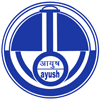| PUBLISHER DETAILS : | Printed by B.R. Ghanekar, at Nirnayasagar press, 23 Kolbhat lane, Bombay and Published by Vaidya Yadavji Tricumji Acharya, 372, Bora Bazar street, Fort, Bombay. |
YEAR OF PUBLICATION : | 1912 |
|---|
| ABOUT THE BOOK : | The Rasasara written by Govindācārya is a treatise almost entirely devoted to alchemy. The work consists of 940 verses, arranged in twenty-six chapters (patala). Chapter one (rasapūjās varūpastuti; 21 verses) is in praise of mercury etc.; Chapter two (dravyasamgraha; 19 verses) enumerates the items of an alchemist's equipment. Chapter three (anukramanikā: 17 verses) lists twice twenty-four samskaras. Chapter four (astacatvarimsatsamskara: 13 verses) is about the dosas of mercury, its purification, and the effects of a number of samskāras. Chapter five (rasasodhanasamskāra; 69 verses) describes the details of sodhana of mercury etc.; Chapter six (rasalohauddhisattvapitani; 39 verses) deals with the purification of the rasas and uparasas and the extraction (patana) of their essences etc.; Chapter seven (sattvasthirikaraga: 14 verses and a half) is about processes which make the sattvas, after their extraction, stable (sthira). Chapter eight (drutipātanānāgunanirūpana: 59 verses and a half) is concerned with the liquefaction (druti) of the sattvas of the rasas and uparasas,lohas, ratnus, ete: some groups of substances are also dealt with: tailavarga etc.; Chapter nine (kṣaradrivabiḍapakadivyausadha: 28 verses) gives an account of angry or rangadruti, enumeration of herbs which are useful in the jārana mārana and bandhana of mercury. Chapter ten (ratnalakṣaṇadravanabhedanamelapaka; 50 verses and a half) describes the ratnas and their varieties, their dravana (druti), marana (or bhedana), and melana (mixing). Chapter eleven (bijapāka: 57 verses) describes a number of bijās, which are helpful in the process called jārana and the pāka of the bijās. Chapter twelve (maharasajāranādividhi: 95 verses) is concerned with cārana, garbhadruti, jarana of a grasa added to mercury, etc.; Chapter thirteen (vedhādikrama: 27 verses) describes several types of vedha, udghātana. Chapter fourteen (dvandvamárapististambhananigadabandhanasankalikāyogadrutikarmādinirúpana: 35 verses) gives an account of dvandvamela (mixing two substances) and dvandvamāra (killing of this mixture), pististambhana, nigadabandhana, sankalla and druti. Chapter fifteen (rasoparasalohakarman; 34 verses and a half) describes operations leading to transmutation (vedha), in which several sattvas of rasas and uparasas, such as those of vaikrānta of various colours and of vimala. are important. Chapter sixteen (ratnaprayoga; 22 verses) is about the uses of ratnas their kalkas (pastes), etc., as bijas in the making of gold and silver. Chapter seventeen (anekakalkabeda: 45 verses) describes the kalkabandhana of mercuryetc.; Chapter eighteen (manimūsākarmadala: 24 verses) is about the uses of gems (mani) and the transmutation of metals. Chapter nineteen (gutkākathana: 12 verses and a half) is devoted to the preparation of two varieties of gutika, called kāmadhenu, which convert base metals into gold and make one obtain a divine and invulnerable body. Chapter twenty (anekagutikadinimsadhanopāyah, 47 verses) describes several gutikās which confer longevity, the ability to fly (khecaratva), invisibility, invulnerability, etc.; Chapter twenty-one (krauñcayogapaksakarmadivyaushadhi: 68 verses and a half) is concerned with the uses of animal products (krauñcayoga: 1-Sab) in alchemical operations and with divine herbs (divyausadhi) and their uses. Chapter twenty-two (yantramūsa: 20 verses and a half) describes yantras and other implements used in an alchemical workshop. Chapter twenty-three (maharasasevana 31 verses) is about rituals to be performed before using mercurial products that lead to dehasiddhi. Chapter twenty-four (rasāyanakathana, 16 verses) describes rasas which may be used for curing diseases and for rasayana purposes. Chapter twenty-five (dhātumaranaprayoga; 28 verses) is concerned with the killing of metals and essences (sattva). Chapter twenty-six (maharasaseva; 46 verses) is about the consumption of mercurial preparations and the wonderful effects obtained. |
|---|

